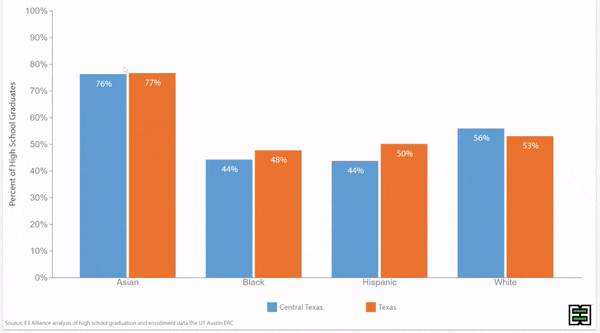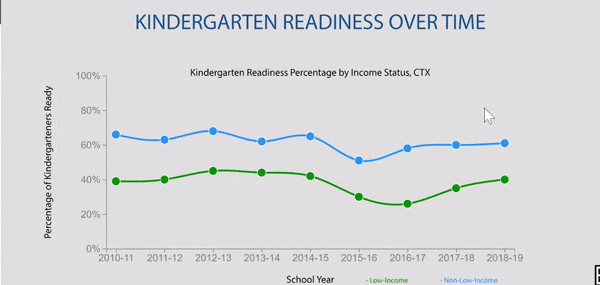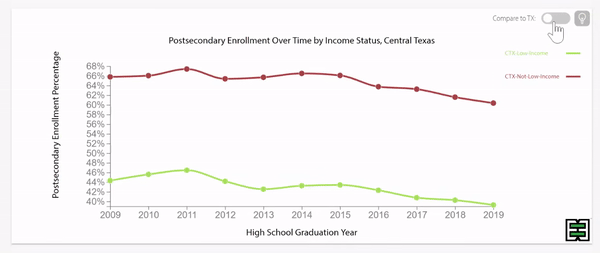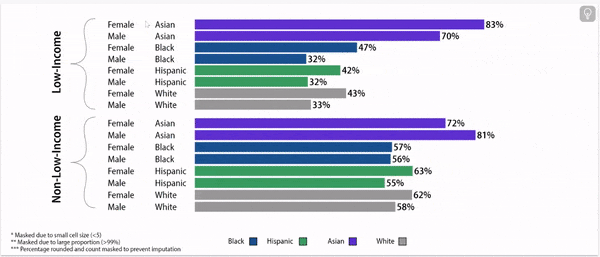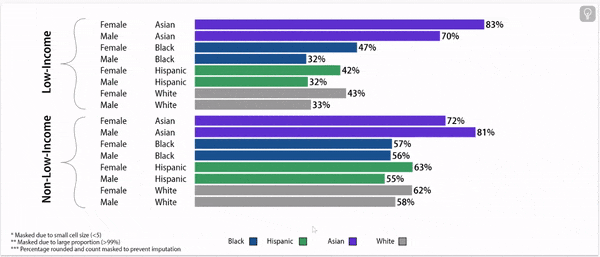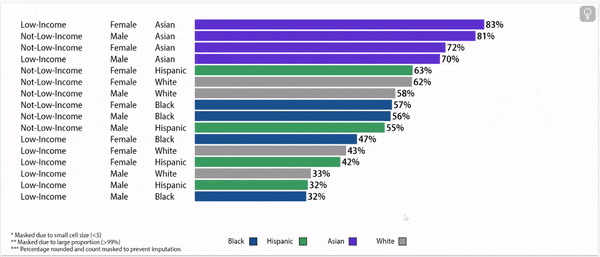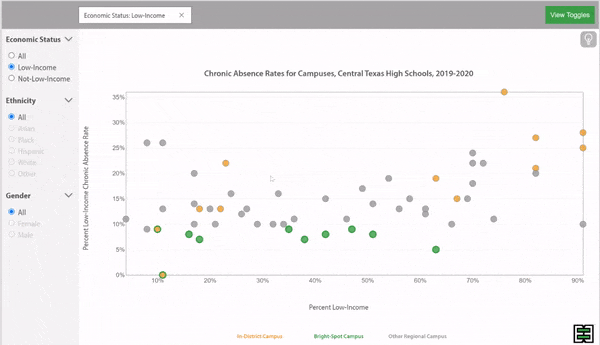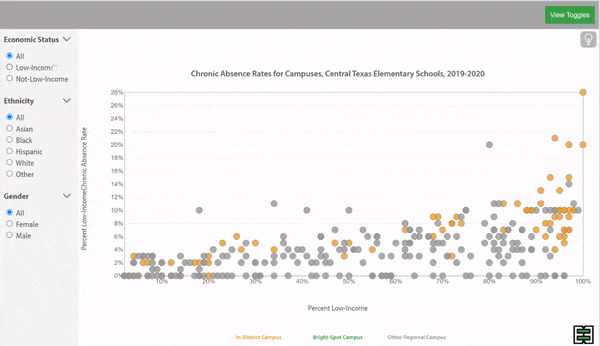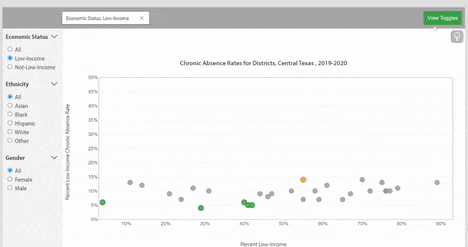Attendance Profile
For more information about this data, please click here.
24%
41,928 / 175,824
El Paso
Chronic Absence Rate
21%
1,167,951 / 5,687,504
Texas
Chronic Absence Rate
Average Days Absent Lowest in Middle Grades, Highest for Pre-K
Chronic Absence Rates Lowest in Middle Grades, Highest for Pre-K
Texas Middle Schools Had the Lowest Number of Average Days Absent
Chronic Absence Rate Stable for Past Ten Years Until Covid-19 Impact
Disparities Exist in Chronic Absenteeism by Household Income
Disparities in Chronic Absenteeism by Household Income at Highest Level in Decade
Chronic Absenteeism Varies by Race
Disparities in Chronic Absenteeism by Race at Highest Level in Decade
Digging Deeper: Gender, Income, and Race Play a Role in Chronic Absenteeism
Chronic Absence Rates, 2023
Compare your District and Campuses to Others Using the Scatterplots Below
Economic Status
Ethnicity
Gender
Economic Status
Ethnicity
Gender
Economic Status
Ethnicity
Gender
Economic Status
Ethnicity
Gender
About this data:
E3 Alliance relies primarily on data from the University of Texas Education Research Center (ERC). This data allows for a year-by-year understanding of chronic absenteeism based on where a student attends school. This data pertains to Pre-K through 12th grade students who were enrolled within the state of Texas during a given school year.
Following are items to note:
Chronic absenteeism rates reflect whether a student was present for less than 90% of the days the student was enrolled.
Pandemic era data on attendance should be interpreted differently from prior years, for example, students enrolled in schools that did not report attendance data for the last 12 weeks of School Year 2019-2020 were marked as present during that time period. During the 2020-2021 school year, remote learners were often determined absent based on assignment submission timeframes.
There is a delay in data availability due to state approval within the ERC and analysis time. As such, if you choose to explore data from Central Texas, the graphs below present attendance data in the most recent available year in Texas schools.
Outcomes that reference data from 2021, 2022, or 2023 do not include San Marcos CISD, due to a data discrepancy.

